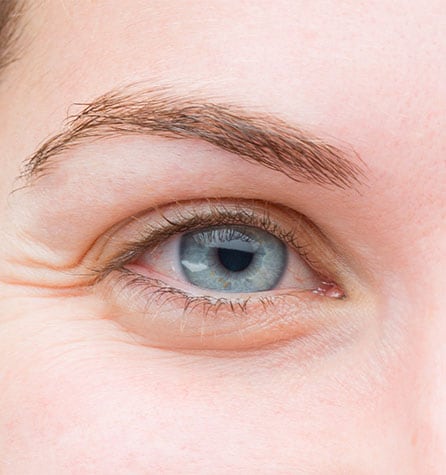Eye Center Andalusia: State-of-the-Art Look After All Ages
Eye Center Andalusia: State-of-the-Art Look After All Ages
Blog Article
Comprehending the Different Vision Improvement Procedures Available for Clearer Sight
In the realm of vision improvement treatments, a wide range of options exist to address refractive errors and provide people with clearer view. From the commonly acknowledged LASIK surgical procedure to less intrusive procedures like PRK and implantable lenses, the field of ophthalmology uses a variety of techniques customized to fit various requirements and choices. Each procedure comes with its very own set of factors to consider, benefits, and possible threats. Comprehending the nuances of these vision modification methods is critical for making notified decisions about one's aesthetic health and wellness. Let's check out the intricacies of these treatments and shed light on the course to achieving enhanced vision quality.
LASIK Surgical Procedure
LASIK surgical treatment is an usual refractive treatment made use of to fix vision issues such as astigmatism, nearsightedness, and farsightedness. This medical technique, which stands for Laser-Assisted sitting Keratomileusis, aims to reshape the cornea to improve exactly how light is concentrated on the retina, inevitably enhancing vision clarity. During the procedure, a thin flap is produced on the cornea, and a laser is used to eliminate exact quantities of cells to improve it properly. This reshaping allows for light to be precisely focused onto the retina, remedying refractive errors.
One of the primary advantages of LASIK surgical treatment is the rapid renovation in vision experienced by clients. On the whole, LASIK surgery is a popular option for individuals seeking a lasting service for their vision problems.
PRK Treatment

PRK is an ideal choice for individuals with slim corneas or those at a higher risk of eye injuries, as it does not include developing a corneal flap. The recuperation process for PRK is a little longer compared to LASIK, as the epithelium needs time to regrow. Individuals might experience pain and blurred vision for a couple of days following the treatment.
In spite of the longer recuperation time, PRK can generate superb lead to vision renovation, making it a beneficial option for those that may not appropriate prospects for LASIK surgical procedure. - Neurologist Andalusia
Implantable Lenses
As opposed to PRK where the cornea is reshaped directly, implantable lenses supply another technique for remedying vision by placing artificial lenses inside the eye. This procedure is especially beneficial for individuals with high levels of astigmatism, farsightedness, or nearsightedness who might not appropriate candidates for laser surgeries like LASIK or PRK.
Implantable lenses, likewise called phakic intraocular lenses, work by supplementing the eye's natural lens with a synthetic one. These lenses can be placed before the natural lens (anterior chamber) or behind the iris and in front of the all-natural lens (posterior chamber) By look at these guys readjusting the power and positioning of these lenses, ophthalmologists can properly remedy refractive errors and boost visual skill.
One benefit of implantable lenses is that they are removable and exchangeable, providing flexibility for future modifications. As with any surgical click site treatment, there are risks entailed, such as infection or cataract development. People taking into consideration implantable lenses should speak with an eye care professional to establish one of the most appropriate option based upon their individual requirements and eye wellness.
Corneal Rings

The treatment for inserting corneal rings is reasonably quick and minimally intrusive, often executed as an outpatient treatment. During the surgery, the ophthalmologist makes a tiny incision in the cornea and inserts the rings at a specific depth. When in location, the rings assist to improve the cornea, giving a smoother surface area for light to enter the eye, which can result in more clear find out here now vision.
Corneal rings are taken into consideration a relatively easy to fix treatment, as they can be eliminated or changed if essential. While they may not totally get rid of the requirement for glasses or get in touch with lenses, corneal rings can substantially improve vision high quality and total aesthetic convenience for individuals with keratoconus or various other corneal irregularities.
Refractive Lens Exchange
Following the modification of corneal abnormalities with procedures like corneal rings, an additional vision adjustment strategy that can deal with refractive errors is Refractive Lens Exchange (RLE) RLE is an operation that includes replacing the eye's natural lens with a man-made intraocular lens (IOL) to remedy refractive errors such as nearsightedness, presbyopia, and farsightedness. This procedure is especially advantageous for people who might not be appropriate prospects for treatments like LASIK or PRK as a result of variables such as thin corneas or high refractive errors.
Recuperation time for RLE is reasonably quick, and clients can anticipate improved vision quickly after the treatment. As with any surgical treatment, prospective risks and issues exist, so a detailed appointment with an eye care professional is vital to determine if RLE is the appropriate vision improvement option.
Conclusion

In the realm of vision improvement procedures, a multitude of alternatives exist to address refractive mistakes and supply individuals with clearer view.LASIK surgical treatment is a typical refractive procedure made use of to remedy vision troubles such as nearsightedness, astigmatism, and farsightedness.While likewise a typical refractive procedure, the PRK (Photorefractive Keratectomy) method differs from LASIK surgical treatment in its technique to fixing vision issues.Following the modification of corneal irregularities with treatments like corneal rings, an additional vision improvement technique that can deal with refractive mistakes is Refractive Lens Exchange (RLE) LASIK surgery, PRK treatment, implantable lenses, corneal rings, and refractive lens exchange are all choices that can address various vision concerns.
Report this page